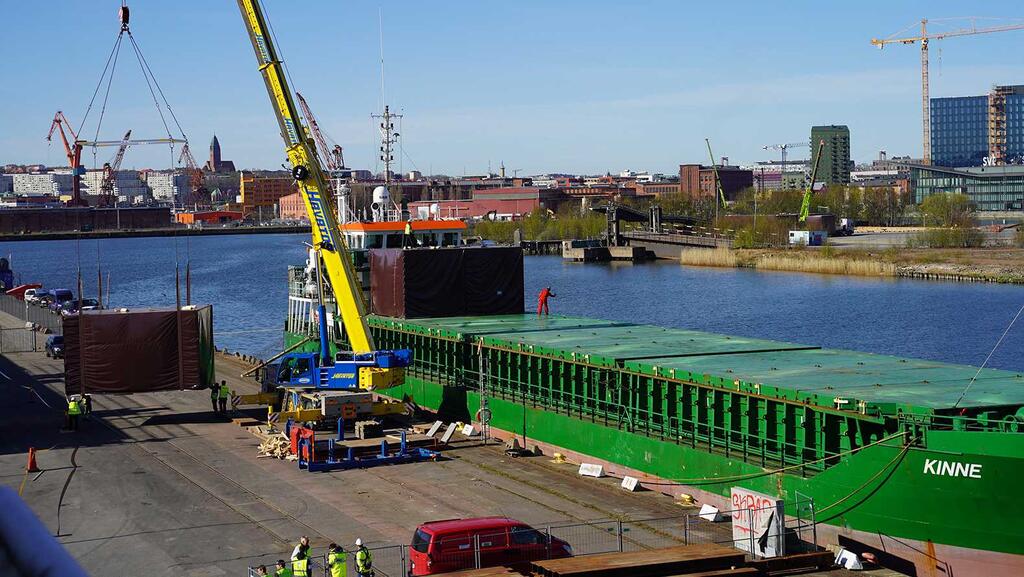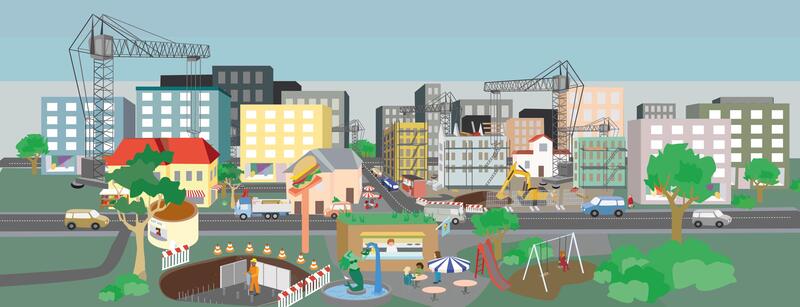Water and railways enable efficient and climate-smart construction logistics
Cities are becoming increasingly dense and in order to build them, many different modes of transport are needed so that it can take place with minor impact on the environment in the city. "If the construction site is located at or close to a railway station or port, these forms of transport should be used, since it contributes to less congestion both at the construction site and in the cities and on our roads," says Anna Fredriksson, Linköping University.

As part of the MIMIC project, which is managed by CLOSER, we are reviewing how different parts of the logistics chain can reduce congestion and make building centrally in cities more efficient. One important factor is to review ways of transporting that are not used to the extent that could be possible, e.g. water and railways.
Storage during construction in the city
Today, 90% of all construction materials are transported by road, and the variation in the size of what is transported is substantial. In exceptional cases, some small packages can be transported by bike, but most materials are large, heavy and unwieldy, and there is often a shortage of space at a construction site in a city.
"If there are delays at a construction site and materials already on their way need to be stored, it ishardly ever possible at the actual site. If transport is carried out by truck, the truck must stop on the road or a provisional storage location must be arranged. If transport takes place by boat or train, it is usually not a problem to store the materials at the harbour or railway yard," says Anna Fredriksson, Linköping University.
A minor thing like rain can mean that certain steps cannot be carried out on a construction, causing an urgent delay, and thus the need for goods transported by truck to wait along the way. But if the goods are transported by boat or rail, the goods can easily be stored at the harbour or railway yard.
"One thing to consider is that the inability to transport goods the entire journey by water or railway does not have to be an obstacle. It can instead be regarded as an opportunity to avoid making the last stretch of the trip through the city with really heavy-duty trucks and, instead, transport the goods on smaller trucks. If the goods arrive from a major thoroughfare on a heavy-duty truck, it is often necessary to drive through central parts of a city. But if the goods come from a railway station or even a harbour, which is usually located on the other side of the city, in many cases you don't have to drive through the centre," explains Anna Fredriksson.
Frihamnen in Gothenburg tests the waterways
Something that is perfect for transport on water is large materials such as building modules, which has now been tested in Gothenburg. Anna Fredriksson says that Gothenburg has great potential for utilising water to a greater extent than it is currently used.
Stefan Pirhonen, project manager for Älvstranden Utveckling, explains how Frihamnen, centrally located in Gothenburg, has tested the use of ships to transport material to a construction project.
As part of Gothenburg City Council and Älvstranden Utveckling's work on developing Frihamnen, modular buildings are currently being constructed there. The modules are transported by ship from Lithuania.
"One of the first advantages we can see is that instead of transporting by truck, where each truck carries two modules at a time, the ship can carry 48 modules at a time. This means that it takes one day to unload the modules, after which the construction can proceed and the tradesmen will not be interrupted by further deliveries," says Stefan Pirhonen.
Stefan Pirhonen continues by explaining that the advantages of this mode of transport are not only that is enables more efficient construction, it also has a major environmental impact.
-"But the greatest advantage of all is still the reduction of carbon dioxide emissions. By delivering 48 modules on one ship instead of 24 trucks, we reduce our carbon dioxide emissions by 60%," says Stefan Pirhonen.

MIMIC – Aiming for sustainble construction logistics

